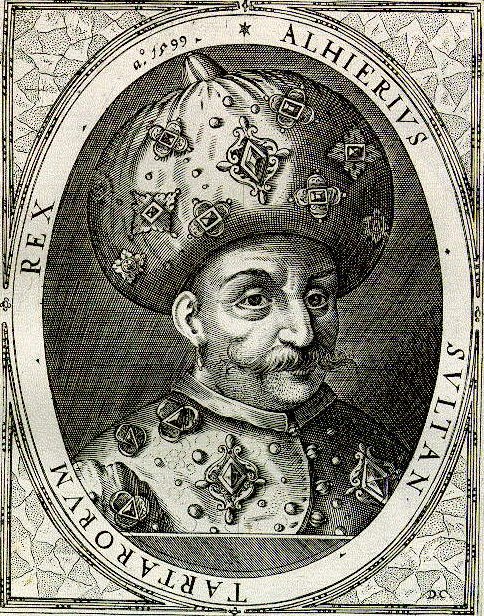Battle Of Cecora (1595) on:
[Wikipedia]
[Google]
[Amazon]
The Battle of Cecora (also known as the ''Battle of Țuțora'') took place on October 19–20, 1595, during an expedition of Jan Zamoyski, of the Polish–Lithuanian Commonwealth, to Moldavia, as part of the Moldavian Magnate Wars.




Background
In early 1595 Sigismund Báthory, Prince of Transylvania, convincedȘtefan Răzvan
Ștefan Răzvan (died December 1595) was a Voivode (Prince) of Moldavia (between 24 April 1595 and August 1595) of Romani descent from the historical state of Wallachia.
Biography
The father of Ștefan Răzvan was a Muslim Roma from the Ottoman ...
, a commander of Hungarian mercenaries in the service of the then Hospodar Aaron the Tyrant to rebel. Ștefan captured Aaron and sent him to Transylvania, then proclaimed himself as the new Hospodar and a vassal of Sigismund. In response the Ottoman Sultan
Sultan (; ar, سلطان ', ) is a position with several historical meanings. Originally, it was an Arabic abstract noun meaning "strength", "authority", "rulership", derived from the verbal noun ', meaning "authority" or "power". Later, it ...
Mehmed III, who had been Aaron's protector and sovereign, decided to put an end to the ongoing power struggles in Moldavia, Wallachia, and Transylvania between various magnates. While Wallachia was to receive a new Turkish sponsored ruler, Moldavia was to be simply incorporated into the Ottoman Empire as a province. The Ottoman intervention aroused alarms in the Polish–Lithuanian Commonwealth which sought to reestablish its influence in the region, having lost sovereignty over Moldavia some hundred years earlier after the Battle of the Cosmin Forest.
Battle
In the summer of 1595 the crown army of the Kingdom of Poland, numbering around 5000 cavalry, 2300 infantry, and a few artillery pieces, led by the Crown Hetman Jan Zamoyski entered into the territory of the Principality of Moldavia and on the 27th of August tookChocim
Khotyn ( uk, Хотин, ; ro, Hotin, ; see other names) is a city in Dnistrovskyi Raion, Chernivtsi Oblast of western Ukraine and is located south-west of Kamianets-Podilskyi. It hosts the administration of Khotyn urban hromada, one of ...
and shortly after, on September 3, the capital of the principality, Iași
Iași ( , , ; also known by other alternative names), also referred to mostly historically as Jassy ( , ), is the second largest city in Romania and the seat of Iași County. Located in the historical region of Moldavia, it has traditionally ...
. Zamoyski then installed Ieremia Movilă, who was amicably disposed towards the Polish–Lithuanian Commonwealth, as Hospodar (Prince) of Moldavia. Zamoyski's intent was to create a buffer zone of friendly states around the Polish–Lithuanian Commonwealth, consisting of Moldavia, Transylvania, and Wallachia, in order to protect it from Ottoman Turkey.
The Ottomans reacted swiftly, although at the time Sultan
Sultan (; ar, سلطان ', ) is a position with several historical meanings. Originally, it was an Arabic abstract noun meaning "strength", "authority", "rulership", derived from the verbal noun ', meaning "authority" or "power". Later, it ...
Mehmed III was engaged in a war against Michael the Brave, the Prince of Wallachia. The Sultan sent the Crimean Tatars, under Khan
Khan may refer to:
*Khan (inn), from Persian, a caravanserai or resting-place for a travelling caravan
*Khan (surname), including a list of people with the name
*Khan (title), a royal title for a ruler in Mongol and Turkic languages and used by ...
Ğazı II Girej, supported by regular Ottoman troops, altogether numbering around 25,000 soldiers, to meet the Polish army. Upon hearing that the Tatars were approaching, Zamoyski crossed the Prut river and on September 6 had his troops erect a fortified camp, which was protected on both flanks by the river. The front of the camp in turn was defended by a rampart studded with thirteen bastion
A bastion or bulwark is a structure projecting outward from the curtain wall of a fortification, most commonly angular in shape and positioned at the corners of the fort. The fully developed bastion consists of two faces and two flanks, with fi ...
s. The rampart also possessed four sally ports which could be used for sortie
A sortie (from the French word meaning ''exit'' or from Latin root ''surgere'' meaning to "rise up") is a deployment or dispatch of one military unit, be it an aircraft, ship, or troops, from a strongpoint. The term originated in siege warfare. ...
s.
The Khan's army arrived on the 18th of September. That day minor fighting took place among individual skirmishers, during which Prince Kirill Różyński wounded the khan's nephew with a bow. The main fighting took place the following day when the khan's troops tried to storm the Polish camp. However, because the Tatars had few infantry the attempt was unsuccessful, and the attackers were constantly harried by Polish sallies issuing from the camp. After the struggle went no better for the Tartars on the 20th, Ğazı came to the conclusion that he did not have the means to take the camp and agreed to peace talks.
On October 21 a peace treaty
A peace treaty is an agreement between two or more hostile parties, usually countries or governments, which formally ends a state of war between the parties. It is different from an armistice, which is an agreement to stop hostilities; a surr ...
was signed, according to which the Tatars recognized Movilă as Hospodar in Moldavia, and assented to Polish troops being permanently stationed in the Principality. Two days later the Tatar army began its withdrawal.
References
{{DEFAULTSORT:Cecora, Battle of Cecora 1595 Cecora (1595) Cecora Cecora Cecora Military history of Romania History of Western Moldavia 1595 in the Ottoman Empire 1595 in Europe 16th century in Moldavia